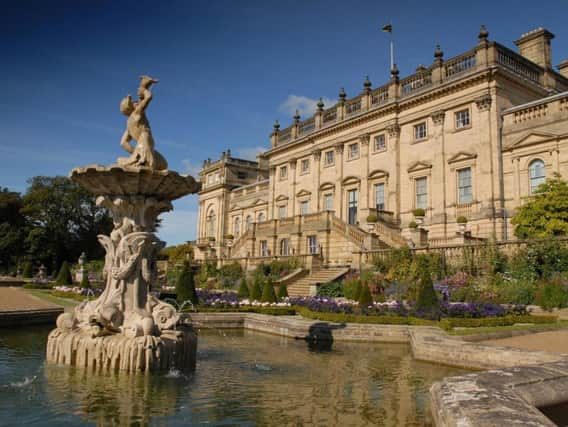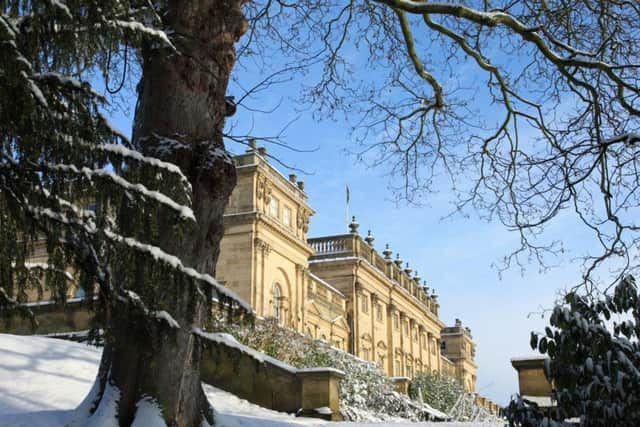How Harewood House in Yorkshire was built with the profits of slavery


Before they were ennobled with an earldom, the Lascelles family, who still own Harewood House today, made their money from trade - mainly their sugar plantations in Barbados, which were worked by African slaves.
Holiday lets and holistic yoga retreats: How the new generation of Lascelleses are modernising HarewoodThe family's association with the slave trade is mainly attributed to Henry Lascelles, who came from a family of gentleman farmers in Northallerton. The family had interests in Barbados, then a British possession in the Caribbean, as early as 1648, and Henry first went to the island in 1712, when he was 22, with his brothers George, Edward and Daniel. He became a merchant, customs official and planter.
Advertisement
Hide AdAdvertisement
Hide AdThe brothers concentrated on sugar production and exports, importing slaves from west Africa to work on the plantations.


Henry later returned to London to establish his own sugar business, acquired a seat in Parliament and became one of the wealthiest men in England. He retired in 1750, aged 60, and three years later took his own life while suffering from cataracts on his eyes. He left three sons - Edwin, Daniel and Henry Jnr.
It was Edwin who was installed as lord of the family's manor at Harewood in 1748 - Henry had purchased the estate a decade earlier - and he commissioned the building of Harewood House from 1759 to 1771. In 1790, he was made the first Baron Harewood and joined the English nobility.
He was in charge of the family fortune from 1786, when his younger brothers Daniel and Henry both died within two years of each other. He then added 22 more plantations in the West Indies and nearly 3,000 more slaves to his portfolio, taking advantage of the collapse in the sugar export market during the American War of Independence.
Advertisement
Hide AdAdvertisement
Hide AdHowever, Edwin died childless and his new title became extinct. The fortune passed to his cousin Edward, son of his father Henry's brother Edward, who had been a customs official in Barbados. Edward was given the earldom of Harewood and the title of Viscount Lascelles in 1812, and his son Henry became the second earl.
The family became respectable aristocrats, and in 1922 the sixth earl, also a Henry Lascelles, married Princess Mary, the daughter of King George V and aunt of the present Queen. The current, and eighth, earl is David Lascelles, who in 2005 spoke about his ancestors' links with the slave trade for a TV series about the history of the West Indian colonies.
"Behind every fortune lies a great crime"
When a TV company approaches the Lascelles family to make a BBC2 programme about Henry Lascelles, the family opened their extensive archives.
"That period in history is both fascinating and gruesome," David Lascelles told the Yorkshire Post in 2005.
Advertisement
Hide AdAdvertisement
Hide Ad"For some years Harewood has been helping researchers at York University on the life and times of Henry Lascelles, we've handed over many letters and other documents, so we didn't hesitate.
"However, having seen a preview tape, the inference is that they have unearthed some forgotten skeletons, something we were trying to cover up, which isn't the case at all. There is no acknowledgment that we actually helped in making the programme."
The programme even explored one of Henry's most nefarious schemes - a 'floating slave factory' where the human cargo would be imprisoned before being sold on.
"If you make material available then you have to live with the consequences, people will do with it what they will. It is a fiction and it is a drama, so inevitably there are some events which appear to happen simultaneously, but which in truth were years or decades apart. It's historical fact made on a low budget.
Advertisement
Hide AdAdvertisement
Hide Ad"To be fair to the programme makers, they do show it was not just this one particular man who was responsible for slavery, and they don't put 21st century sensibilities into the mouths of 18th century characters, but the slave trade is a blot on all our histories and raking through the past is not particularly helpful."
"We have to try to be positive. There's absolutely nothing we can do about the past, we can't travel back in time to change the bad things our ancestors did.
"We can only in our own small way tackle the problems which exist today and address the issues which mean some groups feel they have no part in the community in which they are living.
"That's very much our thrust of what we do here.
"I hope Harewood is a positive thing in people's lives because they feel secure here, it's a nice place to come, and it would be a shame if the hard work we have done here was undermined by this programme. We strive to be inclusive, we are not here as a playground for the middle classes.
Advertisement
Hide AdAdvertisement
Hide Ad"There's a lot of educational work going on and we do a lot of work with schools, particularly those in deprived urban areas. And there are some schools who we have provided transport for because they couldn't afford the cost.
"What I don't want to see happen is that Harewood becomes known as 'that slavery place'."
The Lascelles family have a legacy on Barbados - many local residents who are descended from slaves still have Lascelles or Harewood as their surname, as it was common for slaves to take the name of their owners.
The family sold their last plantation on the island in 1970.